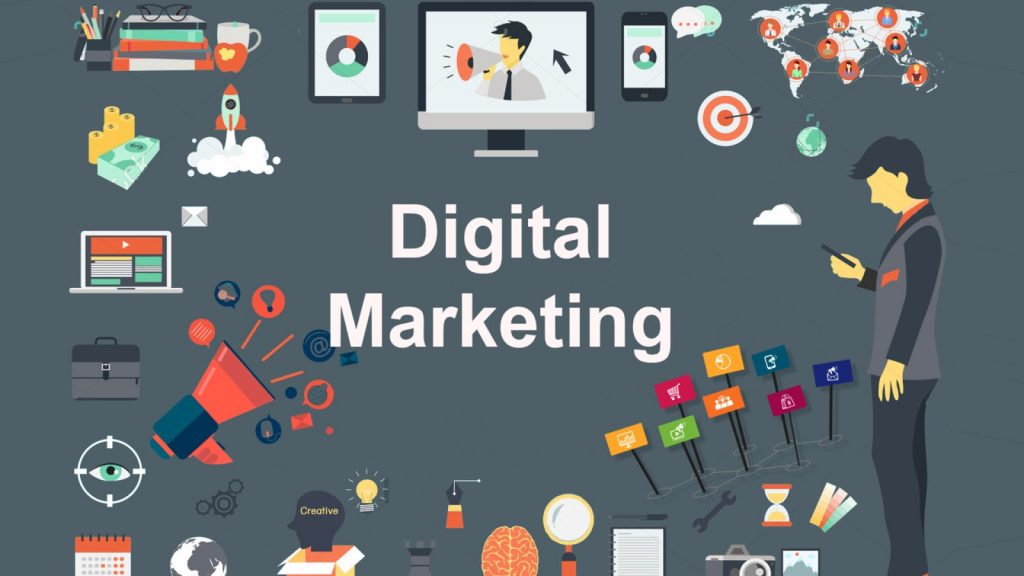In today’s hyperconnected world, digital marketing has become the backbone of business strategies, reshaping how companies engage with consumers. Unlike traditional methods confined to print or broadcast media, digital marketing leverages the internet, mobile devices, and social platforms to deliver targeted messages, foster brand loyalty, and drive measurable results. Its rise, beginning in the 1990s with the advent of the internet, has transformed marketing from a one-way broadcast into a dynamic, interactive dialogue between brands and audiences.

Core Channels of Digital Marketing
At its core, digital marketing operates through diverse channels, each tailored to specific goals. Website marketing remains foundational, serving as a brand’s digital storefront. A well-designed website must be fast, mobile-friendly, and intuitive, reflecting a company’s identity while guiding visitors toward conversions. Complementing this, pay-per-click (PPC) advertising allows businesses to bid for ad placements on search engines or social media, targeting users based on demographics, interests, or search behavior. Platforms like Google Ads and Meta Ads enable precise audience segmentation, ensuring ads reach those most likely to engage.
Content marketing takes a subtler approach, offering value through blogs, videos, or infographics rather than overt promotion. For instance, a skincare brand might publish tutorials on YouTube, subtly integrating product recommendations. This strategy builds trust and positions the brand as an authority. Meanwhile, email marketing persists as a cost-effective tool, particularly when paired with lead-generation tactics. By nurturing prospects with personalized offers or newsletters, companies convert subscribers into loyal customers.
Social media’s influence cannot be overstated. Platforms like Instagram and TikTok allow brands to humanize their messaging through storytelling and real-time interaction. A successful campaign might blend promoted posts with user-generated content, fostering community while amplifying reach. Additionally, affiliate marketing has seen a resurgence, with influencers and bloggers earning commissions by promoting products. Amazon’s affiliate program, for example, rewards partners for driving sales through personalized referral links.

Metrics and Challenges
The strength of digital marketing lies in its measurability. Key performance indicators (KPIs) such as click-through rates (CTR) and conversion rates provide tangible insights into campaign effectiveness. For instance, a high CTR on a Google Ad suggests compelling messaging, while a rising conversion rate indicates successful persuasion. Social media metrics—likes, shares, and follower growth—reveal audience engagement, while website traffic analytics highlight content performance and user behavior.
However, the digital landscape is not without hurdles. The sheer volume of data can overwhelm marketers, demanding advanced analytics skills to extract actionable insights. Moreover, consumers today face an avalanche of ads, making it harder to capture attention. Brands must innovate to stand out—whether through interactive video campaigns on TikTok or AI-driven personalization that tailors ads to individual preferences.
Another critical challenge is implicit bias, often unintentionally embedded in campaigns. For example, stock photo choices might exclude diverse demographics, perpetuating stereotypes. Addressing this requires conscious efforts to audit content for inclusivity, ensuring marketing resonates with all audiences.
The Future of Digital Marketing
As technology evolves, so does digital marketing. Emerging trends like voice search optimization and augmented reality (AR) ads are redefining engagement. Voice-activated devices demand SEO strategies optimized for conversational queries, while AR allows users to “try before they buy,” such as virtual makeup trials. Furthermore, privacy regulations like GDPR compel marketers to prioritize transparency and data ethics, balancing personalization with consumer trust.
For aspiring digital marketers, a blend of creativity and technical proficiency is essential. Strong writing skills craft compelling narratives, while data literacy turns metrics into strategies. Courses and certifications in SEO or social media management provide a competitive edge, though hands-on experience—through internships or freelance projects—remains invaluable.
Conclusion
Digital marketing is no longer optional; it’s a necessity in a world where screens dominate daily life. By mastering its tools—from SEO to social media—businesses can forge meaningful connections, adapt to shifting trends, and thrive in an increasingly competitive arena. Yet, success hinges not just on technology, but on understanding the human element: delivering value, fostering trust, and embracing diversity at every touchpoint.



